<< Back to Resources Home Page

Epigenetics Podcast from Active Motif
Discover the stories behind the science.
Active Motif's Epigenetics Podcast is a lively discussion about the latest tips and techniques for epigenetics research. Podcast host Dr. Stefan Dillinger chats with experts from different fields within epigenetics about the latest research findings, the hottest epigenetics applications, and how to overcome the many challenges of ChIP and other epigenetic assays.
FILTER:
All
Featured
Episodes
Epigenetic
Methods
DNA
Methylation
Chromatin
Structure
Histone
Modifications
RNA
Modifications
Epigenetics
& Disease
Comparing CUT&Tag to ENCODE ChIP-Seq in Alzheimer's Disease Samples
Sarah Marzi
Ep. 123 - Apr. 18, 2024




Split-Pool Recognition of Interactions by Tag Extension (SPRITE)
Mitch Guttman
Ep. 119 - Feb. 22, 2024


Sex-biased Imprinting and DNA Regulatory Landscapes During Reprogramming
Sam Buckberry
Ep. 117 - Jan. 25, 2024

BET Proteins and Their Role in Chromosome Folding and Compartmentalization
Kyle Eagen
Ep. 116 - Jan. 11, 2024








The Impact of Chromatin Modifiers on Disease Development and Progression
Capucine van Rechem
Ep. 108 - Sept. 7, 2023

Long-Range Transcriptional Control by 3D Chromosome Structure
Luca Giorgetti
Ep. 107 - Aug. 23, 2023

Transgenerational Inheritance and Epigenetic Imprinting in Plants
Mary Gehring
Ep. 106 - Aug. 10, 2023


Analysis of 3D Chromatin Structure Using Super-Resolution Imaging
Alistair Boettiger
Ep. 104 - July 13, 2023















The Role of Pioneer Factors Zelda and Grainyhead at the Maternal-to-Zygotic Transition
Melissa Harrison
Ep. 89 - Nov. 30, 2022
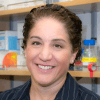







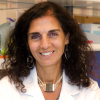
Characterization of Epigenetic States in the Oligodendrocyte Lineage
Gonçalo Castelo-Branco
Ep. 80 - July 28, 2022






The Role of Histone Dopaminylation and Serotinylation in Neuronal Plasticity
Ian Maze
Ep. 74 - May 12, 2022


Multimodal Characterization of Cellular Identity | CITE-Seq and Beyond
Peter Smibert, VP of 10X Genomics
Ep. 72 - Apr. 14, 2022

The Effect of Mechanotransduction on Chromatin Structure and Transcription in Stem Cells
Sara Wickström
Ep. 71 - Mar. 31, 2022

Single-Cell Technologies using Microfluidics
Ben Hindson, CSO of 10x Genomics
Ep. 70 - Mar. 16, 2022










Enhancers and Chromatin Remodeling in Mammary Gland Development
Camila dos Santos
Ep. 60 - Oct. 28, 2021



Heterochromatin Protein 1 and its Influence on the Structure of Chromatin
Serena Sanulli
Ep. 57 - Sept. 16, 2021



Effects of Non-Enzymatic Covalent Histone Modifications on Chromatin
Yael David
Ep. 54 - Aug. 5, 2021



Development of Integrative Machine Learning Tools for Neurodegenerative Diseases
Enrico Glaab
Ep. 51 - June 24, 2021


Variants of Core Histones: Modulators of Chromatin Structure and Function
Sandra Hake
Ep. 49 - May 27, 2021






Investigating the Dynamics of Epigenetic Plasticity in Cancer with Single Cell Technologies
Céline Vallot
Ep. 43 - Mar. 3, 2021
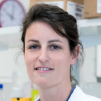
Epigenetic Regulation of Stem Cell Self-Renewal and Differentiation
Peggy Goodell
Ep. 42 - Feb. 17, 2021

Genome-Wide Investigation of Epigenetic Marks and Nucleosome Positioning
Keji Zhao
Ep. 41 - Feb. 4, 2021


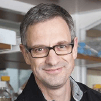




Pioneer Transcription Factors and Their Influence on Chromatin Structure
Ken Zaret
Ep. 34 - Nov. 4, 2020

The Role of Small RNAs in Transgenerational Inheritance in C. elegans
Oded Rechavi
Ep. 33 - Oct. 22, 2020


Regulation of Chromatin Organization by Histone Chaperones
Geneviève Almouzni
Ep. 31 - Sept. 17, 2020

How the "Fragile Nucleosome" Science Community Came to Life
Christine Cucinotta & Melvin Noe Gonzalez
Ep. 30 - Sept. 10, 2020



How to Publish in Nature: Lessons from the ENCODE Consortium
Michelle Trenkmann, Senior Editor at Nature
Ep. 27 - Aug. 6, 2020

The Role of Non-Histone Proteins in Chromosome Structure and Function During Mitosis
Bill Earnshaw
Ep. 26 - July 23, 2020

Effects of DNA Methylation on Chromatin Structure and Transcription
Dirk Schübeler
Ep. 25 - July 2, 2020








PIXUL: On the Leading Edge of Chromatin Shearing
Karol Bomsztyk and Tom Matula
Ep. 17 - Jan. 28, 2020
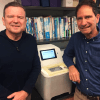
Influence of Histone Variants on Chromatin Structure and Metabolism
Marcus Buschbeck
Ep. 16 - Dec. 16, 2019



The Past, Present, and Future of Epigenetics
Joe Fernandez, founder of Active Motif
Ep. 13 - Sept. 5, 2019




















